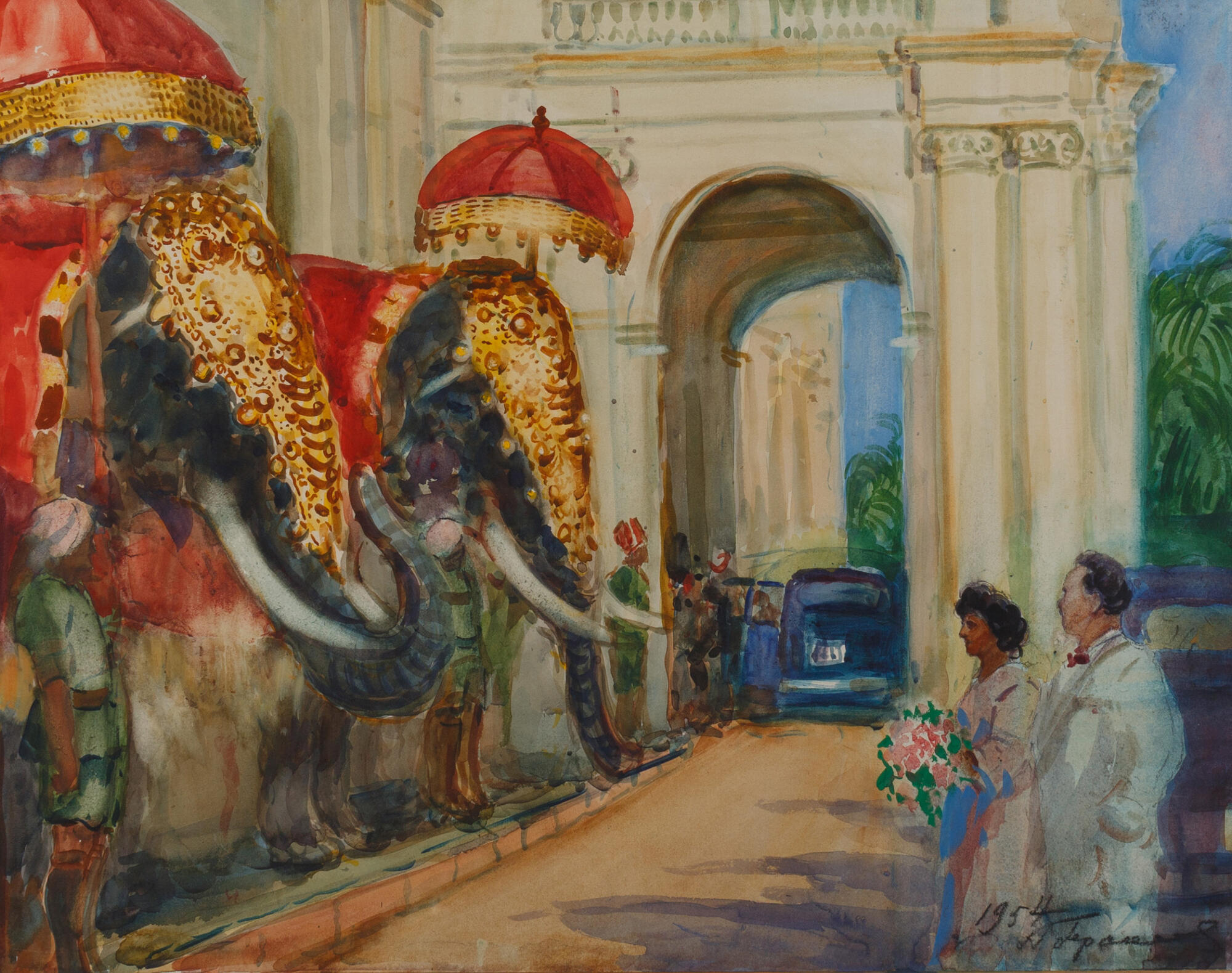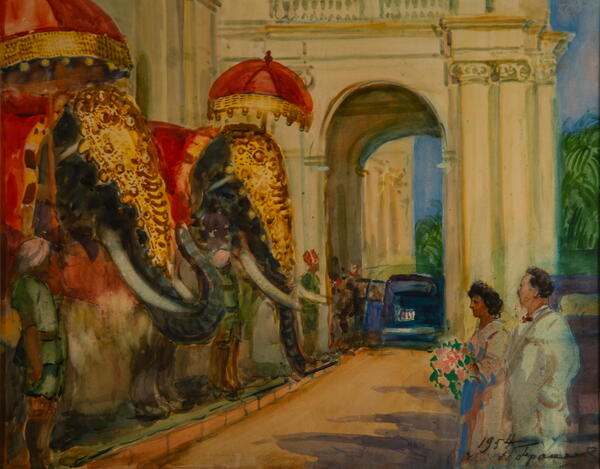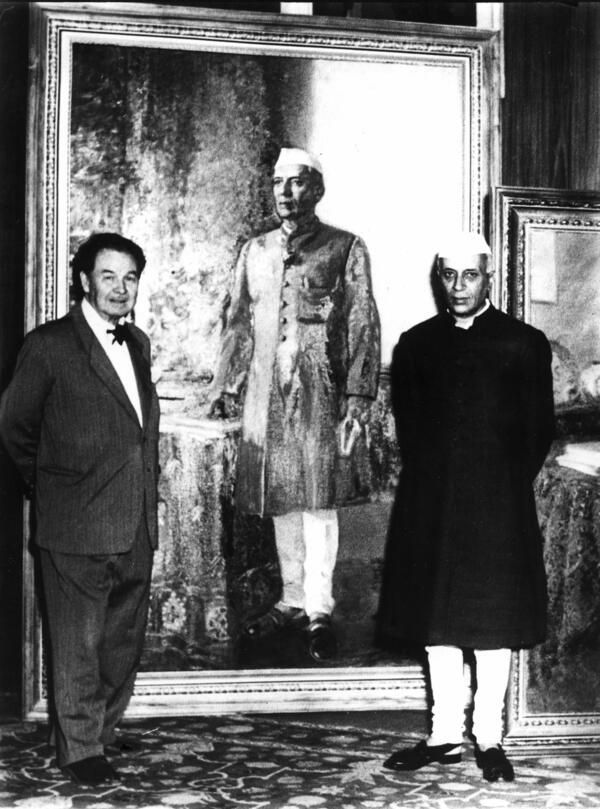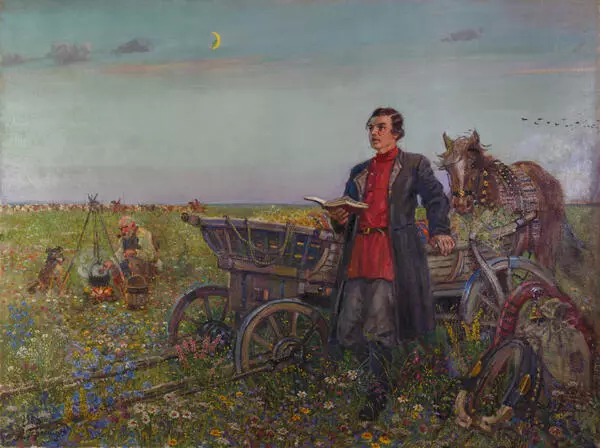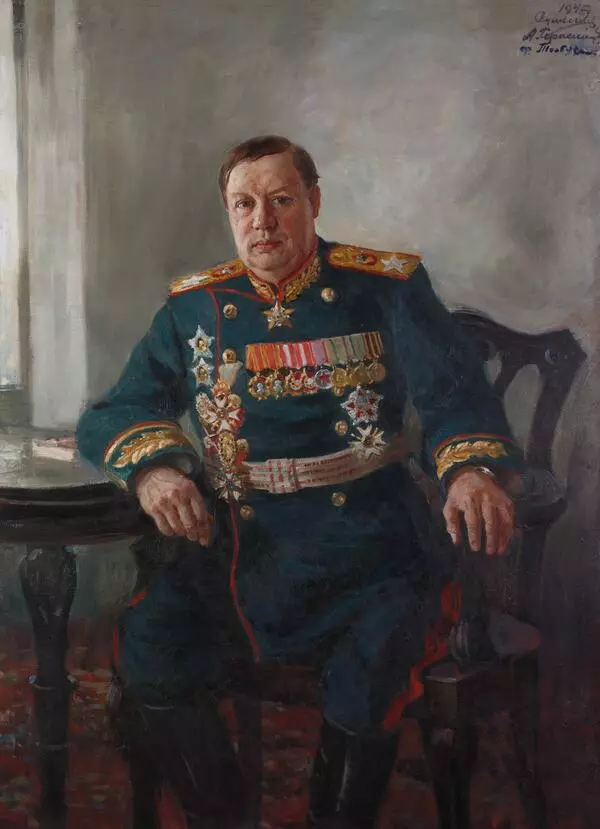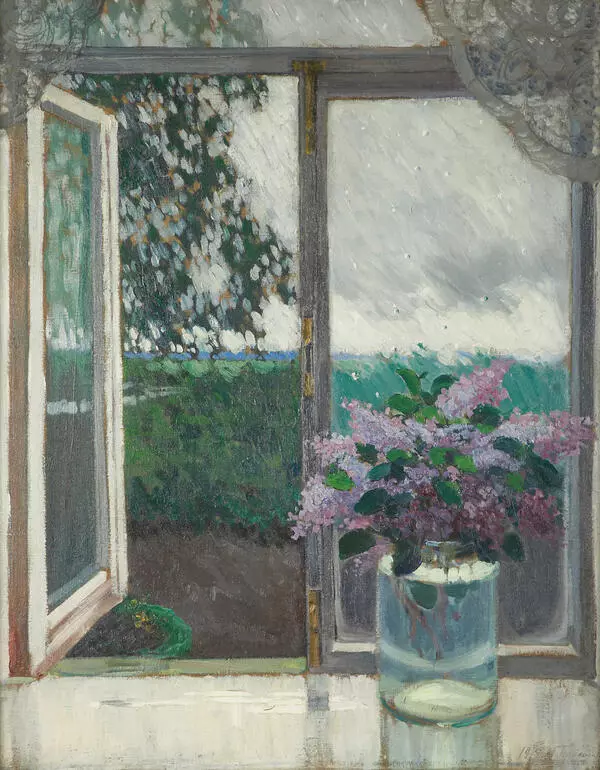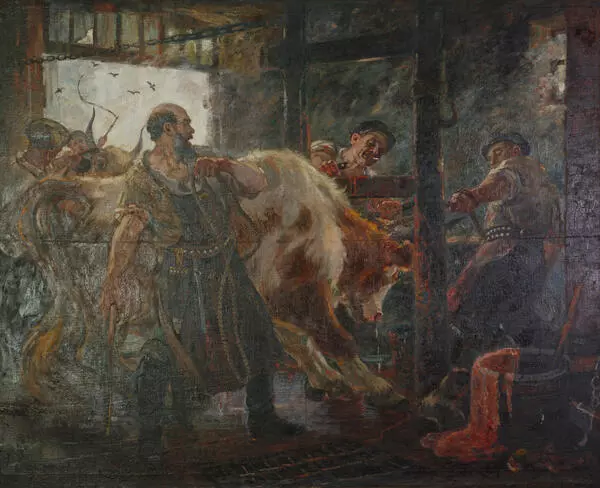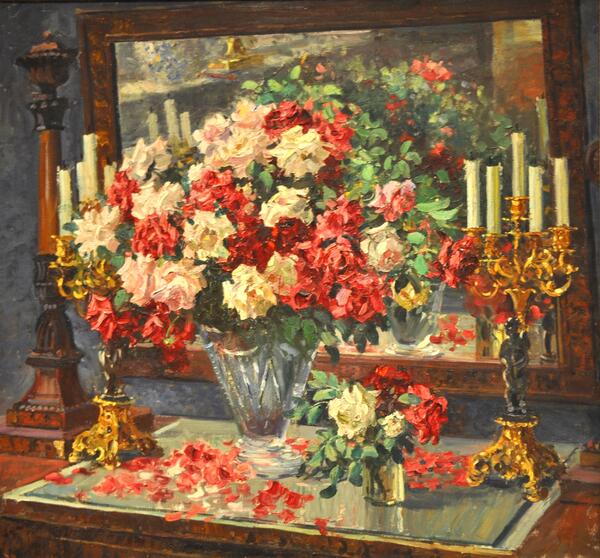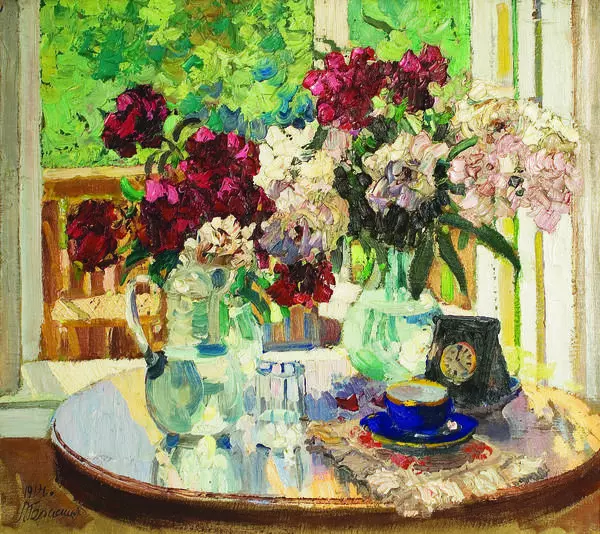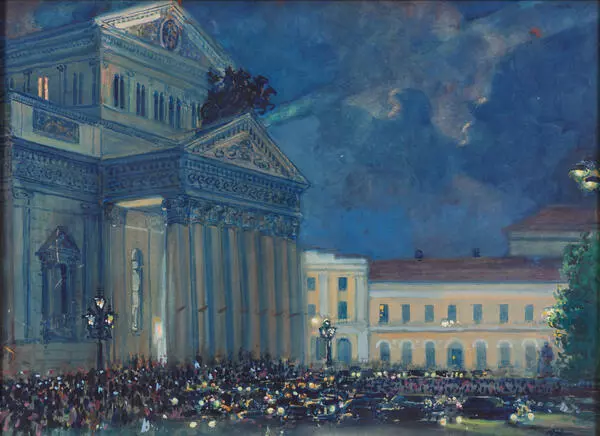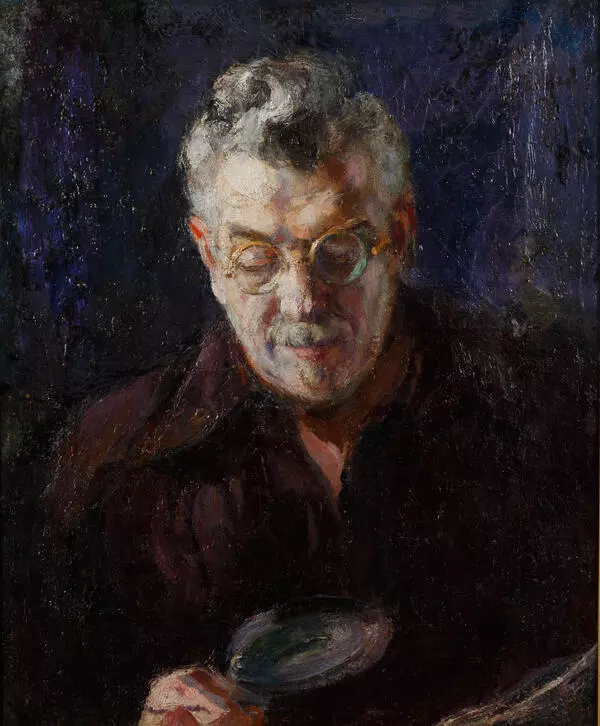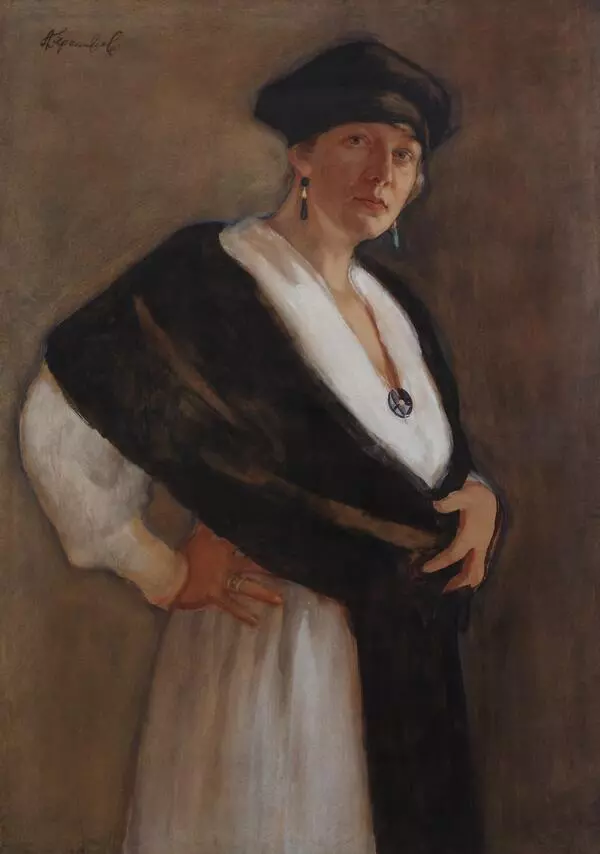Throughout his life, Alexander Gerasimov always thought that creativity went hand in hand with social, organizational, and journalistic activities. His creative skills found their true purpose and proved especially useful during the years when the artist held the important post of president of the USSR Academy of Arts.
Gerasimov’s graphic art is mostly represented by thematic series in watercolor and gouache, including a series of watercolor paintings that resulted from a trip to India. That trip was a reciprocal visit, paid by representatives of the Academy of Arts and the Artists’ Union of the USSR after a large exhibition of Indian art, that took place in the halls of the Academy of Arts of the USSR in Moscow in 1953.
In India, everything caught the artist’s eye: the types of people, the way the cities are arranged, the magnificent, sun-drenched nature, the majestic monuments, and the trees in spring, completely strewn either with purple flowers or cadmium yellow ones. The architecture of India is striking in its originality of forms and boundless flight of imagination. The ancient monuments are especially remarkable for the fusion of architecture and sculpture: their pilasters and columns, completely covered with ornamental patterns, are full of inexhaustible fantasy and an exquisite decorative flair. The theme of India was overwhelmingly rich in material, so Alexander Gerasimov had to set a clear task right from the start and devote most of his time to depicting typical representatives of the Indian people and street life scenes.
Gerasimov’s graphic art is mostly represented by thematic series in watercolor and gouache, including a series of watercolor paintings that resulted from a trip to India. That trip was a reciprocal visit, paid by representatives of the Academy of Arts and the Artists’ Union of the USSR after a large exhibition of Indian art, that took place in the halls of the Academy of Arts of the USSR in Moscow in 1953.
In India, everything caught the artist’s eye: the types of people, the way the cities are arranged, the magnificent, sun-drenched nature, the majestic monuments, and the trees in spring, completely strewn either with purple flowers or cadmium yellow ones. The architecture of India is striking in its originality of forms and boundless flight of imagination. The ancient monuments are especially remarkable for the fusion of architecture and sculpture: their pilasters and columns, completely covered with ornamental patterns, are full of inexhaustible fantasy and an exquisite decorative flair. The theme of India was overwhelmingly rich in material, so Alexander Gerasimov had to set a clear task right from the start and devote most of his time to depicting typical representatives of the Indian people and street life scenes.
